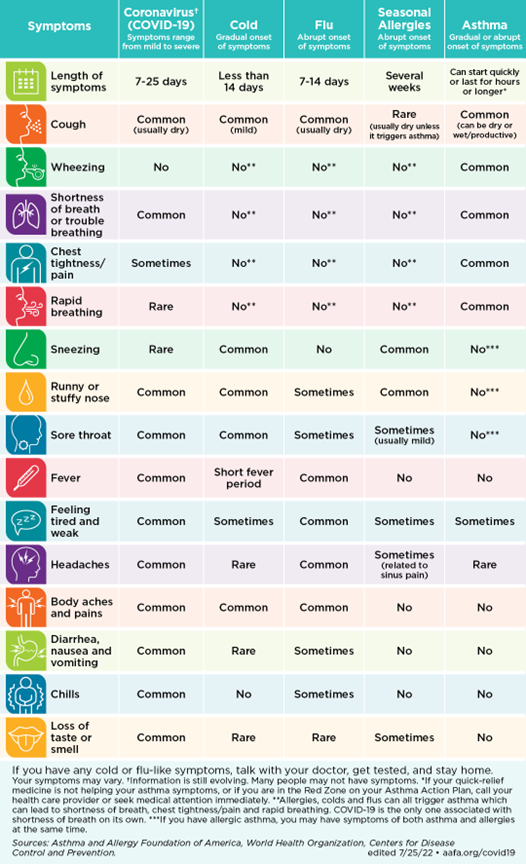Respiratory Infection Time of Year
Join Our Movement
What started as an idea has become a national movement. With your support, we can influence policy and inspire lasting change.
Become an Advocate
The flu is also from viral infections. It affects the nose, throat, lungs, and sometimes the gastrointestinal tract. The symptoms are more sudden than a cold. Flu symptoms usually include fever, but not everyone with the flu develops one. Although anyone can become ill with the flu, children, the elderly, and those immunocompromised are the groups most affected by flu, and more severely. Because it is more of a challenge for these groups to combat the flu internally, they are contagious for longer periods of time.
Flu generally spreads by a few particular viruses each year. The annual flu vaccine is developed to combat several viruses that are predicted to be high in number annually. Flu vaccines work well, which is why other flu viruses arise throughout the flu season.
Development of other healthcare issues or more difficulty in chronic healthcare issue control is a challenge with the flu. Flu can become an ear and/or sinus infection or even pneumonia. Diseases such as congestive heart failure, asthma, or diabetes can be more difficult to control with the flu.
COVID (CO=corona, VI=virus, D=disease) is a respiratory virus that has been around for a number of years. A unique strain was detected in 2019, which is now known as COVID-19. All the COVIDs are very contagious and spreads like other respiratory viruses through droplets and on surfaces. Note that viruses on surfaces need to be fresh for transmission, but it is still a significant mode. Like all viruses, COVID and COVID-19 mutate to become stronger to stay alive. These mutations are called variants.
COVID favors cells in the body called ACE2, which are found heavily in the lungs but also in the bladder and rectum. Transmission can occur anywhere in the body, but besides respiratory entry, those who do bladder and bowel programs have increased risks.
As with other viruses, those most susceptible to COVID viruses are children, the elderly, those with chronic health conditions, especially heart or lung disease, diabetes, those with chronic conditions such as neurological issues, and immunocompromised. Rarely in children, even less often in adults, COVID can be a viral source of Acute Flaccid Myelitis (AFM), a paralysis affecting the gray matter of the spinal cord. This is an extremely severe condition leading to paralysis and mechanical ventilation support.
Respiratory syncytial virus (RSV) is another respiratory virus that presents mainly in the fall and with a smaller number of cases in the spring. You may hear a lot about this virus as it affects children who require hospitalization. It also affects adults but in fewer numbers. Many individuals have mild cases of RSV, which is dismissed as a cold. However, in the fall and early winter, pediatric hospitals become overwhelmed by the number of severe cases. It also affects those who are elders, has chronic health conditions, and are immunocompromised. It can lead to bronchitis, pneumonia, or require mechanical ventilation.

This chart will help you recognize cold, flu, COVID, or RSV symptoms. It is provided by the Asthma and Allergy Foundation of America, the World Health Organization and the Centers for Disease Control.
Prevention of colds, flu, COVID, and RSV is to take preventative actions.
- Discuss your ability to receive the flu, pneumonia, and COVID vaccine with your healthcare professional. Unfortunately, there is no vaccine for colds or RSV at this time.
- Obtain early treatment of your respiratory illness, so it does not develop into a more serious condition.
- If you are immunocompromised or have chronic health conditions, wear a mask.
- Practice social distancing
- Wash your hands thoroughly, often, especially before and after personal care, or touching your face. Caregivers should do the same before touching you.
- Stay hydrated within your bladder management program to keep your mucous membranes moist.
- Avoid anyone with a respiratory illness until they have recovered.
- Strengthen your lungs by deep breathing and coughing several times a day. This helps mobilize secretions in your lungs, making it more difficult for a virus to enter your cells.
- Use an incentive spirometer to help exercise your lungs.
- Never exercise your lungs with the result of dizziness or fatigue. Take frequent breaks.
By now, we are all fully familiar with prevention strategies. However, now is not the time to let our guard down. Protecting yourself and your family is essential in slowing the spread of respiratory illness. Contact your healthcare provider if you are having early symptoms to get the best treatment before a respiratory illness evolves into more. Nurse Linda
Pediatric Consideration:
The return to school time of year is the time that respiratory and infectious diseases thrive in spreading in children. Because they have not been exposed to other children over the summer or have new exposures to children in the classroom that they did not know before, viruses can flourish. Close contact, playing, and breathing/coughing, all spread viruses. Teach your children to wash their hands or have hand sanitizer ready for use.
Find out what plan is in action to reduce the spread of viruses in your child’s school. This should include alerting teachers and administrators to quickly send home children and staff who are ill, hand washing times, available tissues which are disposed of properly and quickly after use, followed by hand washing, and cleaning supplies, equipment, and play areas. This should not be a punitive environment but one of community building where everyone works together for the safety of all. Nurse Linda
